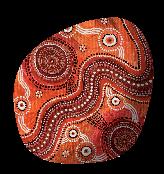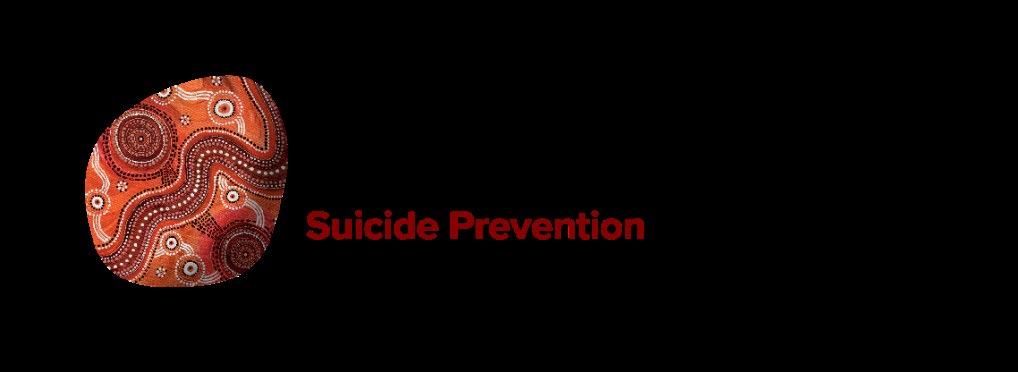Aboriginal and Torres Strait

Islander communities: Suicide data 2022

Australian Bureau of Statistics, Causes of Death, 2022
Released 27 September 2023



Australian Bureau of Statistics, Causes of Death, 2022
Released 27 September 2023
• In 2022, the process for identifying Aboriginal and Torres Strait Islander deaths was improved in NSW by sourcing information on Indigenous status from both the Death Registration Form and Medical Certificate of Cause of Death. This change brings NSW in line with all other states and territories, except for Victoria. However, this means that comparisons to previous years should be treated with caution.

• Trend analysis and detailed data for Aboriginal and Torres Strait Islander people can only be compiled from the jurisdictions of New South Wales, Queensland, Western Australia, South Australia and the Northern Territory. The majority of data in this summary is presented for these states only. The Australian Bureau of Statistics (ABS) advises that data for Victoria, Tasmania and the Australian Capital Territory is not suitable for comparisons and changes over time.
• From 2022, Causes of Death data is presented by the year the death was registered. This represents a change from previous yea rs where data was presented by the reference year. This change has been applied from 2013 onwards.

In 2022, 239 Aboriginal and Torres Strait Islander people died by suicide. This is an increase from the 220 deaths recorded in 2021. The median age of death in 2022 was 33.4 years.
• The number of Aboriginal and Torres Strait Islander suicide deaths increased across all jurisdictions, when comparing 2013- 17 with 2018-22.
• When exploring suicide data, it is important to remember that behind the numbers are people, families and communities impacted by suicide across Australia.
• It is important that Aboriginal and Torres Strait Islander people and services speak to this data. We recommend that you contact the Centre of Best Practice in Aboriginal and Torres Strait Islander Suicide Prevention for advice and guidance on interpretation and communication about this data: cbpatsisp.com.au/contact-us/
The following data pertains only to New South Wales, Queensland, Western Australia, South Australia and the Northern Territory.
• Suicide was the fifth leading cause of death for Aboriginal and Torres Strait Islander people.

• The age-standardised suicide rate for Aboriginal and Torres Strait Islander people has increased between 2013 and 2022 by 33%. The suicide rate is the highest in the 10-year time series at 29.9 per 100,000 people.
• Between 2013 and 2022, the suicide rate for males increased from 33.3 to 46.3 per 100,000. For females, the suicide rate increased from 12.1 to 14.0 per 100,000.
Note: Age-standardised suicide rates are compiled from the jurisdictions of NSW, QLD, WA, SA and NT.
Due to changes in Indigenous death identification in NSW in 2022, use caution when comparing to previous years.

For Aboriginal and Torres Strait Islander people who died by suicide between 2018-2022:
• 80.6% were aged between 15 and 44 years.
• For males, the highest suicide rate was for those aged 35-44 years at 84.9 deaths per 100,000.
• For females, the highest rate was for those aged 15-24 years at 26.9 deaths per 100,000.
Note: Age-specific suicide rates are compiled from the jurisdictions of NSW, QLD, WA, SA and NT.
Due to changes in Indigenous death identification in NSW in 2022, use caution when comparing to previous years.
• Over the period 2018-2022, Aboriginal and Torres Strait Islander people had a suicide rate more than double that of non-Indigenous people.
• The median age for suicides was 33.4 years for Aboriginal and Torres Strait Islander people in 2022 compared to 46.9 years for non-Indigenous people.
Aboriginal and Torres Strait Islander Non-Indigenous
Note: Age-standardised suicide rates are compiled from the jurisdictions of NSW, QLD, WA, SA and NT. Due to changes in Indigenous death identification in NSW in 2022, use caution when comparing to previous years.


Deaths of children by suicide is an extremely sensitive issue and care is required when viewing and reporting on this data. It i s important to remember that behind the numbers are people, families and communities impacted by suicide across Australia.
During the period 2018- 2022:
• Suicide was the leading cause of death for Aboriginal and Torres Strait Islander children, accounting for 27.2% of all deaths among 5-17-year-olds.
• Over three quarters (75.3%) of Aboriginal and Torres Strait Islander children who died by suicide were aged between 15-17 years.
• Over half (57.1%) of Aboriginal and Torres Strait Islander children who died by suicide were female.



• In New South Wales, 66 (45 male, 21 female)
Aboriginal and Torres Strait Islander people died by suicide.
• Suicide was the fifth leading cause of death for Aboriginal and Torres Strait Islander people in New South Wales compared to the 19th leading cause of death for non-Indigenous people.
• The age-standardised suicide rate for Aboriginal and Torres Strait Islander people ( 26.7 per 100,000) was considerably higher than the non- Indigenous age-standardised suicide rate for New South Wales (10.2 per 100,000).
Aboriginal and Torres Strait Islander Non-Indigenous
Data excluded from publication
Note: Age-standardised suicide rates are compiled from the jurisdictions of NSW, QLD, WA, SA and NT.

• Across a five-year period, 276 Aboriginal and Torres Strait Islander people died by suicide.
• The age-standardised suicide rate for Aboriginal and Torres Strait Islander people (22.8 per 100, 000) was higher than the non-Indigenous age-standardised suicide rate (10.5 per 100,000).
Aboriginal and Torres Strait Islander Non-Indigenous
Note: Age-standardised suicide rates are compiled from the jurisdictions of NSW, QLD, WA, SA and NT.



• In the Northern Territory, 28 (20 males, 8 females) Aboriginal and Torres Strait Islander people died by suicide.
• Suicide was the fourth leading cause of death for Aboriginal and Torres Strait Islander people in the Northern Territory, compared to the ninth leading cause of death for non-Indigenous people.
• The age-standardised death rate for Aboriginal and Torres Strait Islander peoples ( 34.5 per 100,000) was considerably higher than the nonIndigenous age-standardised death rate (13.1 per 100,000).
Aboriginal and Torres Strait Islander Non-Indigenous
Data excluded from publication
Note: Age-standardised suicide rates are compiled from the jurisdictions of NSW, QLD, WA, SA and NT.

Northern Territory 2018-2022
• Across a five-year period, 130 Aboriginal and Torres Strait Islander people died by suicide.
• The age-standardised suicide rate for Aboriginal and Torres Strait Islander peoples ( 31.6 per 100,000) was higher than the non-Indigenous age-standardised suicide rate (13.5 per 100,000).
Note: Age-standardised suicide rates are compiled from the jurisdictions of NSW, QLD, WA, SA and NT.



• In Queensland, 58 (46 male, 12 female) Aboriginal and Torres Strait Islander people died by suicide.
• Suicide was the fifth leading cause of death for Aboriginal and Torres Strait Islander people in Queensland, compared to the 12th leading cause of death for non-Indigenous people.
• The age-standardised death rate for Aboriginal and Torres Strait Islander peoples ( 25.4 per 100,000) was considerably higher than the non- Indigenous age-standardised death rate (13.7 per 100,000).
Note: Age-standardised suicide rates are compiled from the jurisdictions of NSW, QLD, WA, SA and NT.

Queensland 2018-2022
• Across a five-year period, 322 Aboriginal and Torres Strait Islander people died by suicide.
• The age-standardised suicide rate for Aboriginal and Torres Strait Islander people ( 28.1 per 100,000) was higher than the non-Indigenous age-standardised suicide rate ( 14.4 per 100,000).
Note: Age-standardised suicide rates are compiled from the jurisdictions of NSW, QLD, WA, SA and NT.



• Data for South Australia in 2022 have been excluded in line with reporting guidelines.
Data excluded from publication
Note: Age-standardised suicide rates are compiled from the jurisdictions of NSW, QLD, WA, SA and NT.

• Across a five-year period, 51 Aboriginal and Torres Strait Islander people have died by suicide.
• The age-standardised suicide rate for Aboriginal and Torres Strait Islander people ( 23.9 per 100,000) was considerably higher than the non-Indigenous age-standardised suicide rate (12.4 per 100,000).
Note: Age-standardised suicide rates are compiled from the jurisdictions of NSW, QLD, WA, SA and NT.



• In Western Australia, 46 (37 male, 9 female)
Aboriginal and Torres Strait Islander people died by suicide.
• Suicide was the third leading cause of death for Aboriginal and Torres Strait Islander people in Western Australia, compared to the 15th leading cause of death for non-Indigenous people.
• The age standardised suicide rate for Aboriginal and Torres Strait Islander people ( 44.0 per 100,000) was considerably higher than the non- Indigenous suicide rate (11.8 per 100,000).
Note: Age-standardised suicide rates are compiled from the jurisdictions of NSW, QLD, WA, SA and NT.

• Across a five-year period, 198 Aboriginal and Torres Strait Islander people died by suicide.
• The age-standardised suicide rate for Aboriginal and Torres Strait Islander people ( 38.1 per 100,000) was higher than the non-Indigenous suicide rate (12.9 per 100,000).
Note: Age-standardised suicide rates are compiled from the jurisdictions of NSW, QLD, WA, SA and NT.






Life in Mind is a knowledge exchange portal providing translated evidence, policy, data and resources in suicide prevention, and is host of the National Communications Charter.



The Centre of Best Practice in Aboriginal and Torres Strait Islander Suicide Prevention (CBPATSISP) is located at the University of Western Australia (UWA) and is Australia’s leading voice on Aboriginal and Torres Strait Islander suicide prevention. The CBPATSISP is engaged in a range of activities, which ultimately aim to prevent Aboriginal and Torres Strait Islander suicide and strengthen social and emotional wellbeing.
